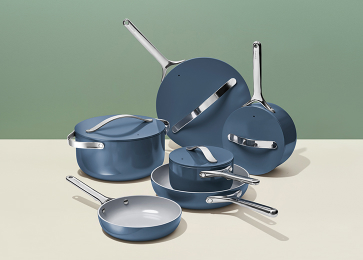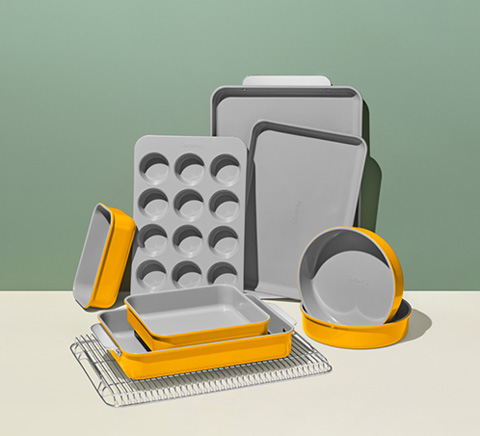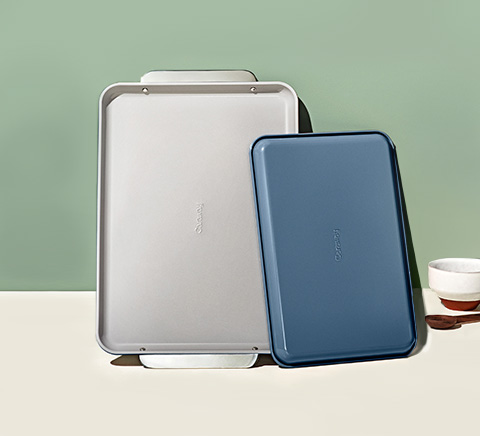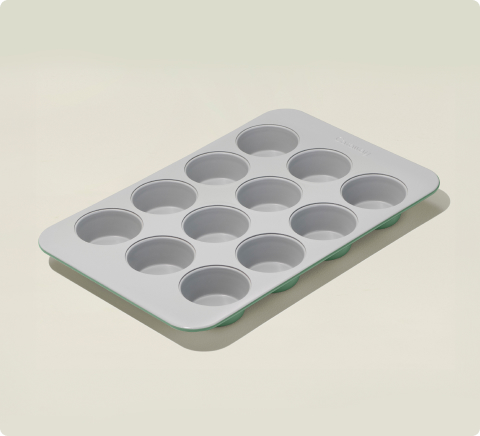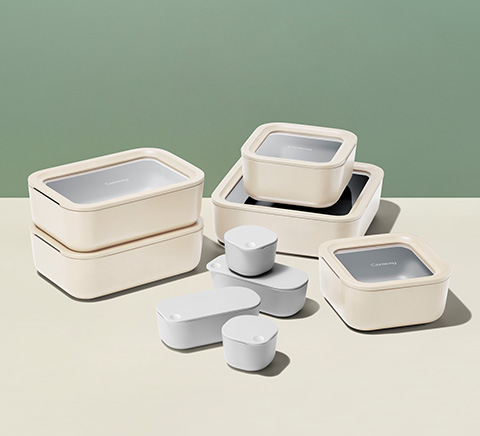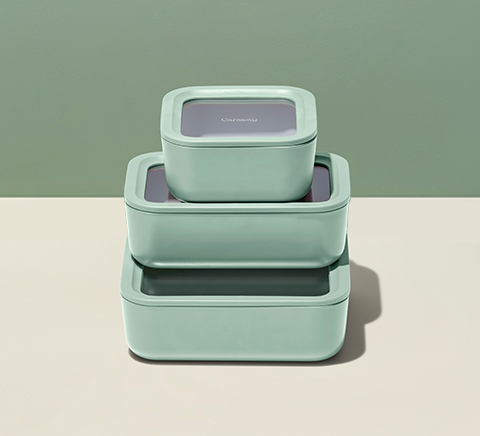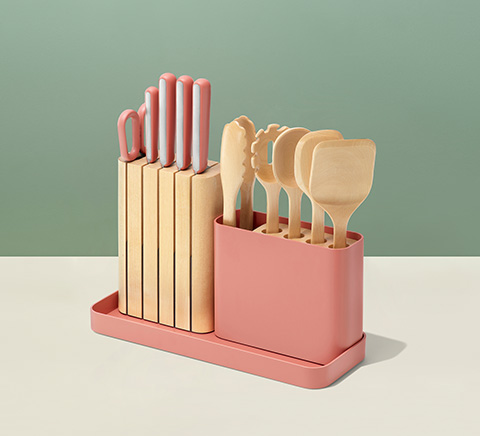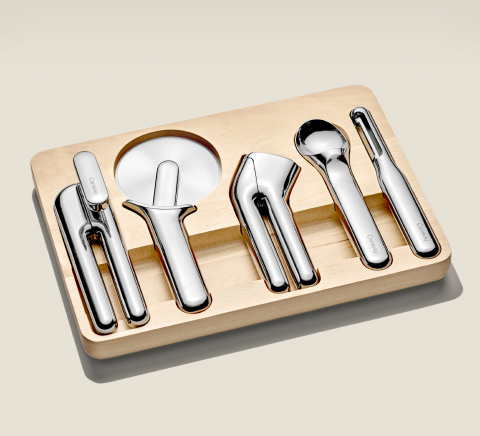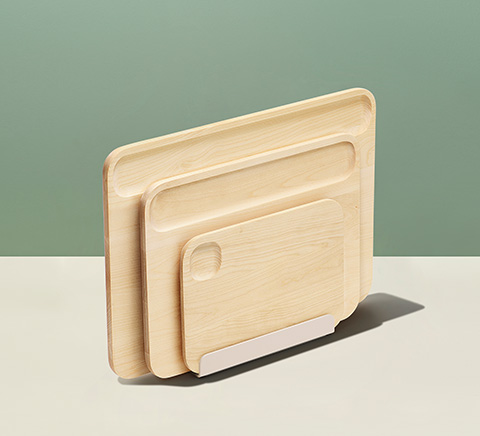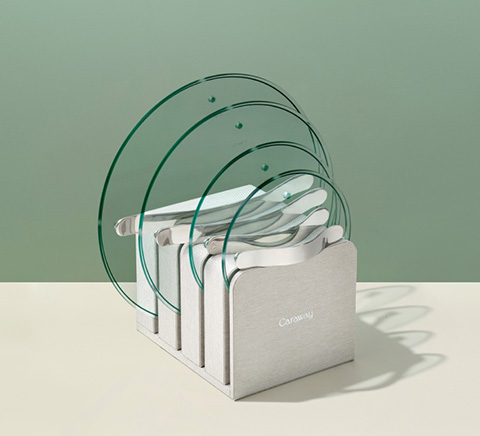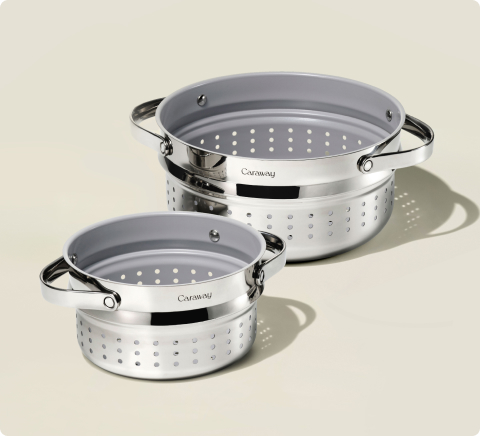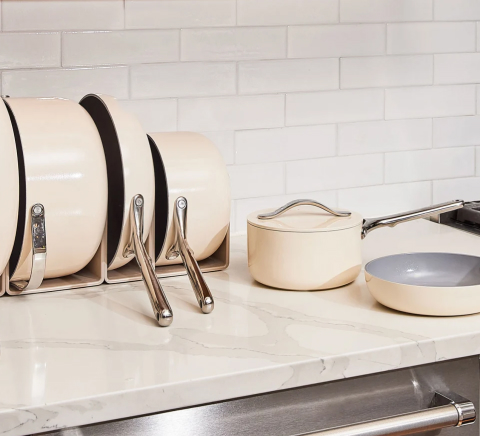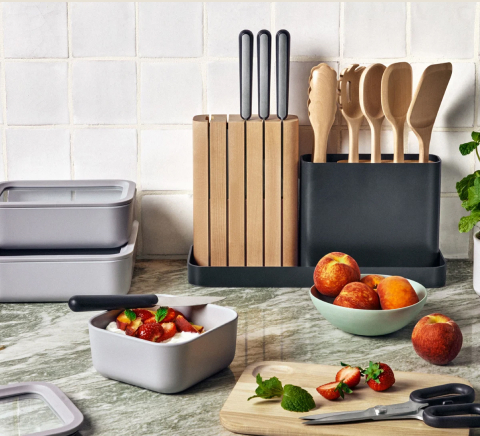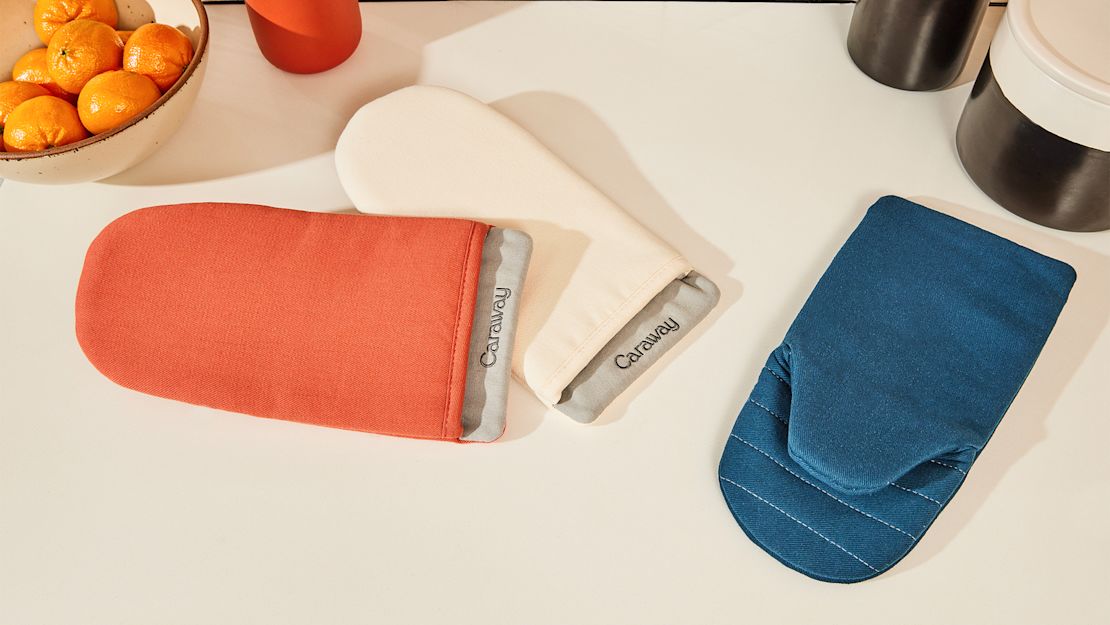At Caraway, we understand that your kitchen linens—oven mitts, tea towels, pot holders, and aprons—are not just tools but partners in dishes, baking, and meal preparation. These tools face spills, splatters, and heat, yet how often do we pause to consider their care?
Properly washed linens are essential not just for hygiene but for maintaining their functionality and extending their lifespan. Sometimes, though, even the best care can't outpace wear and tear, and choosing high-quality replacements becomes necessary.
Let's dive into the why and how of keeping your kitchen linens in top shape.
Why Is It Important to Regularly Wash Kitchen Linens?
Maintaining the cleanliness of your kitchen linens isn't just a matter of routine---it's important for a number of compelling reasons.
Here's why your oven mitts, tea towels, and the like need regular laundry:
-
Hygiene and Health: Kitchen linens can become breeding grounds for bacteria and germs due to their frequent use in handling food, dishes, and surfaces. Regular washing ensures they remain sanitary, reducing the risk of cross-contamination and keeping your kitchen safe.
-
Performance and Longevity: Over time, buildup from cooking oils, food particles, and general grime can compromise the functionality of your linens. For instance, oven mitts might lose their heat resistance, and tea towels their absorbency. Washing them according to their specific care instructions helps preserve these vital functions.
-
Aesthetic Appeal: Clean, well-maintained linens contribute to the overall look and feel of your kitchen. Stains, fading, and wear can make even the most beautiful kitchen seem unkempt. Regular care keeps your linens looking as good as they perform.
-
Fire Safety: Yes, cleanliness ties into safety too. Grease and oil buildup on kitchen linens can pose a fire hazard, especially near the stove. Keeping them clean minimizes this risk, making your kitchen a safer place to create and enjoy meals.
By prioritizing the cleanliness of your kitchen linens, you're not just upholding the aesthetics and hygiene of your space but also ensuring the safety and effectiveness of your cooking endeavors.

How Often Should You Wash Your Kitchen Linens?
Navigating kitchen upkeep means knowing how and when to wash your linens. It's a balancing act---wash too often, and you wear them down prematurely; not enough, and you invite a whole host of issues.
Here's a quick guide to keep your kitchen textiles in check:
-
Tea Towels: Given their heavy use in drying hands, dishes, and surfaces, a rotation every one to two days is ideal. If you're dealing with raw meat or any spill that's a breeding ground for bacteria, swap them out immediately after use.
-
Oven Mitts: These don't require washing after every use, but they should be cleaned well if they come into contact with food or stains. A monthly refresh should suffice unless you're a baking enthusiast, in which case, adjust according to how often they're used.
-
Pot Holders: Similar to oven mitts, a monthly wash is a good rule of thumb. However, if they double as trivets or come into direct contact with food, you'll want to toss them in the laundry a bit more frequently.
-
Aprons: Depending on the messiness of your culinary adventures, aprons can usually last through several uses. Aim for at least a weekly wash.
Remember, these guidelines should be adjusted based on your cooking habits, the specific messes you encounter, and, of course, your own sense of when it's time for a refresh.

How To Wash Oven Mitts and Other Kitchen Linens
Tackling the laundry pile might not be anyone's idea of a good time, but when it comes to kitchen linens, it's all about smart washing.
Here's how to get your oven mitts, tea towels, pot holders, and aprons back to their best:
Oven Mitts
-
Read the Label: Start by checking the care instructions. Most fabric mitts can handle a spin in the washing machine, but materials like silicone might need a different approach.
-
Pre-treat Stains: For tough stains, a little pre-treatment goes a long way. Use a stain remover or a dab of dish soap on greasy spots before washing.
-
Machine Wash: Use a gentle cycle with warm water and a mild detergent. For silicone mitts, warm, soapy water and a thorough hand scrub should do the trick.
-
Air Dry: Let them air dry completely to maintain shape and functionality. Silicone mitts can be towel-dried or left to air-dry.
Tea Towels
-
Hot Cycle: These workhorses of the kitchen need a hot wash to kill off bacteria, especially if they've been used to handle raw meat or to mop up spills.
-
Separate Colors: To keep colors vibrant, wash light and dark fabrics separately.
-
Avoid Fabric Softeners: They can reduce absorbency over time, leaving you with a less effective towel.

Pot Holders
-
Gentle Wash: Like oven mitts, check the care tag first. A gentle cycle with warm water works well for most fabric pot holders.
-
Spot Clean if Needed: Pre-treat any stains or heavily soiled areas before tossing them into the washer.
-
Air Dry: Keep them in shape by air drying. If they're cotton, a quick tumble on low heat is fine, but air drying is best to prevent shrinkage.
Aprons
-
Pre-treat Stains: Given their frontline duty against splashes and spills, pre-treating any stains can be a game-changer.
-
Wash Separately: If your apron is heavily soiled, wash it separately to avoid transferring dirt and oils to other linens.
-
Regular Cycle: A regular wash cycle with a good-quality detergent should get the job done. Adjust the cycle accordingly if your apron is made from a delicate fabric.
Tips for Treating Stains on Kitchen Linens
The battle against stains in the kitchen is ongoing, but it's not insurmountable.
Here's how you can tackle stubborn marks:
Act Quickly
The sooner you address a stain, the better your chances of removing it. Quick action prevents the stain from setting in deep.
Blot, Don't Rub
Gently blot spills to absorb as much as possible without spreading the stain further. Rubbing can embed the stain deeper into the fabric.
Use Cold Water for Protein-Based Stains
Cold water is your go-to for blood, dairy, or meat juices. Hot water can cook the protein, setting the stain permanently.
Boiling Water for Fruit and Coffee Stains
Stretch the fabric over a bowl and pour boiling water through it from a height for fruit and coffee stains. This method can help flush out the stain effectively.
Baking Soda for Grease
Make a paste of baking soda and water and apply it to grease stains. Let it sit for a few hours or overnight before washing.
White Vinegar for Odors and Mild Stains
White vinegar is a mild acid that can break down odor-causing molecules and some stains without harming fabrics. Adding a cup to your wash can also brighten fabrics.
Drying and Storing Kitchen Linens Properly
After washing, proper drying and storage are crucial to keeping your kitchen linens in top shape for longer:
-
Avoid High Heat: High temperatures can shrink and damage fibers, especially cotton. Air dry when possible, or use a low heat setting on your dryer.
-
Iron if Necessary: Some linens, like tea towels and aprons, may benefit from ironing for a crisp finish. Check the care label for ironing instructions.
-
Fold and Store in a Dry Place: Once dry, fold your linens and store them in a clean, dry cabinet or drawer. This prevents mold and mildew growth and keeps them ready for their next use.
-
Roll To Prevent Creases: For aprons and larger towels, rolling instead of folding can prevent creases and save space.
-
Refresh Before Use: If stored for a long time, a quick fluff in the dryer or a spritz with water and ironing can refresh linens before they hit the kitchen scene again.
By treating stains effectively and caring for your linens post-wash, you ensure that they look good and remain functional and ready to tackle whatever your kitchen throws at them.
Signs It's Time To Retire Your Kitchen Linens
Even with meticulous care, every kitchen linen reaches the end of its journey.
Here's how to tell it's time for a replacement:
-
Persistent Stains and Odors: Some stains and smells won't wash out, no matter how hard you try. If your linens still look or smell less than fresh after a thorough cleaning, it's time for them to go.
-
Thinning Fabric or Holes: Frequent use and washing can wear down the fabric, leading to thin patches or holes. This is especially true for pot holders and oven mitts, where any compromise in the material can be a safety hazard.
-
Lost Absorbency or Heat Resistance: If your tea towels aren't drying like they used to, or if an oven mitt feels a tad too hot to handle, their functionality is compromised. It's safer and more efficient to replace them.
Considering an upgrade? Our collection of tea towels, oven mitts, and aprons isn't just designed to perform but to last. Crafted with high-quality materials and sustainable practices, they're a smart, stylish choice for any kitchen.
Conclusion
In the grand scheme of kitchen management, the care we bestow upon our linens reflects the care we put into our cooking and our spaces. Regular washing, attentive maintenance, and timely replacement of these essential items ensure a clean, safe, and beautiful kitchen environment.
When it's time to refresh your collection, remember that Caraway offers a range of kitchen linens that combine functionality with eco-friendly elegance, making every culinary endeavor not just a task but a pleasure.
Keep your kitchen linens in prime condition, and they'll keep your kitchen running smoothly.
Sources:
Hidden Hazard In The Home: Cloths Heavily Soiled With Vegetable Oil Can Start Fires | CPSC.gov
Why Do Clothes Shrink in the Wash? | The Spruce
Reliable and Scientific Tips for Cleaning With Vinegar | NSF
